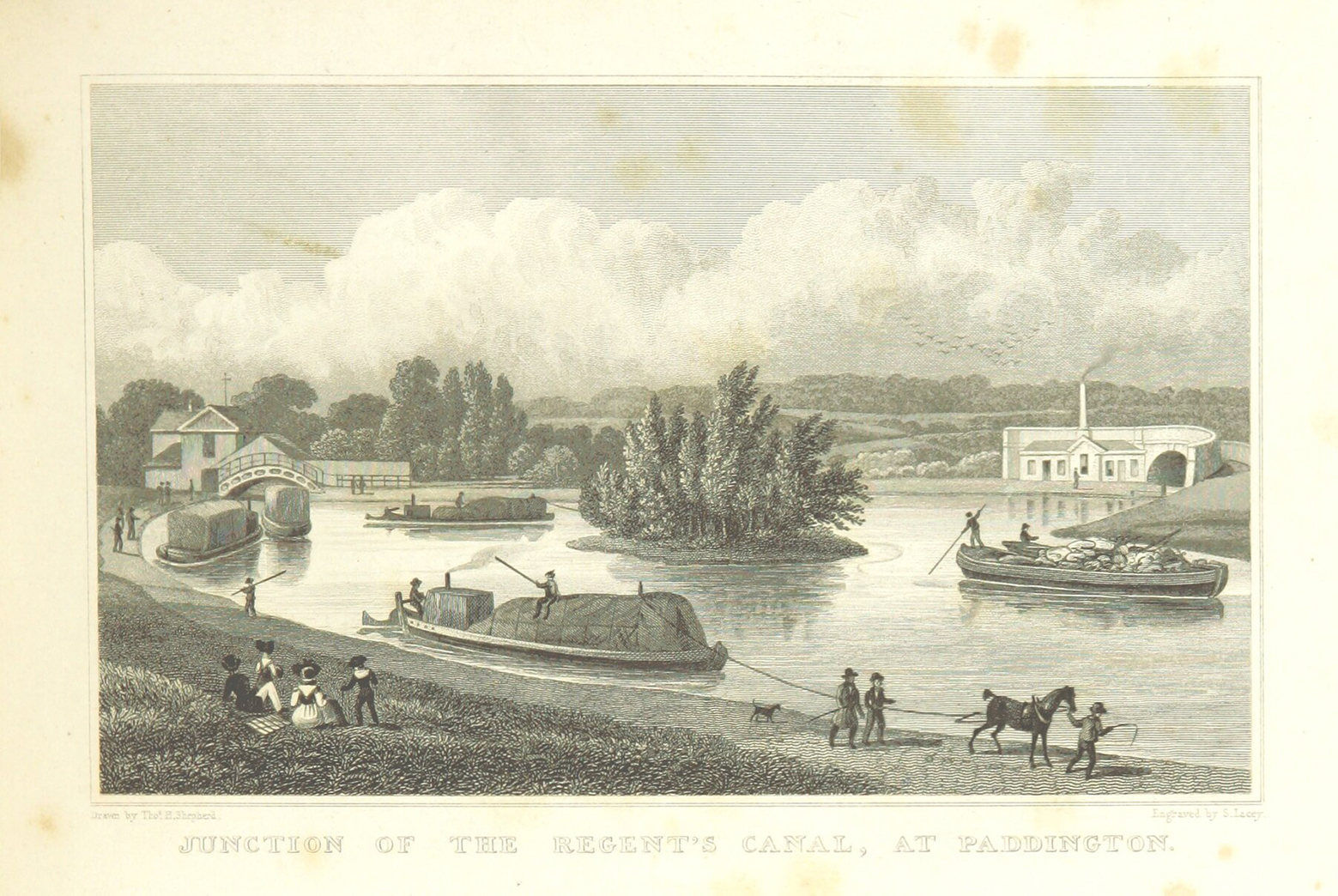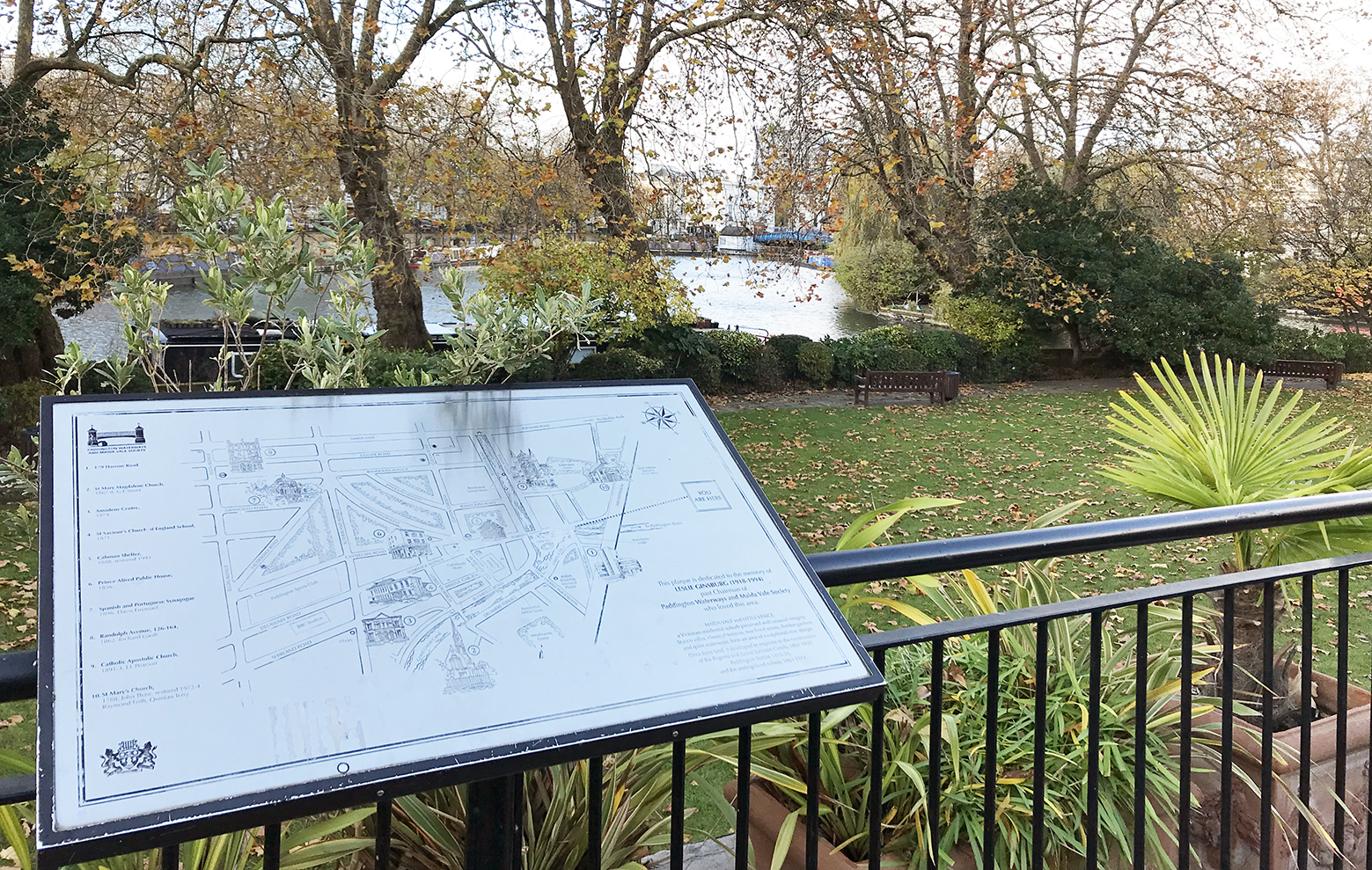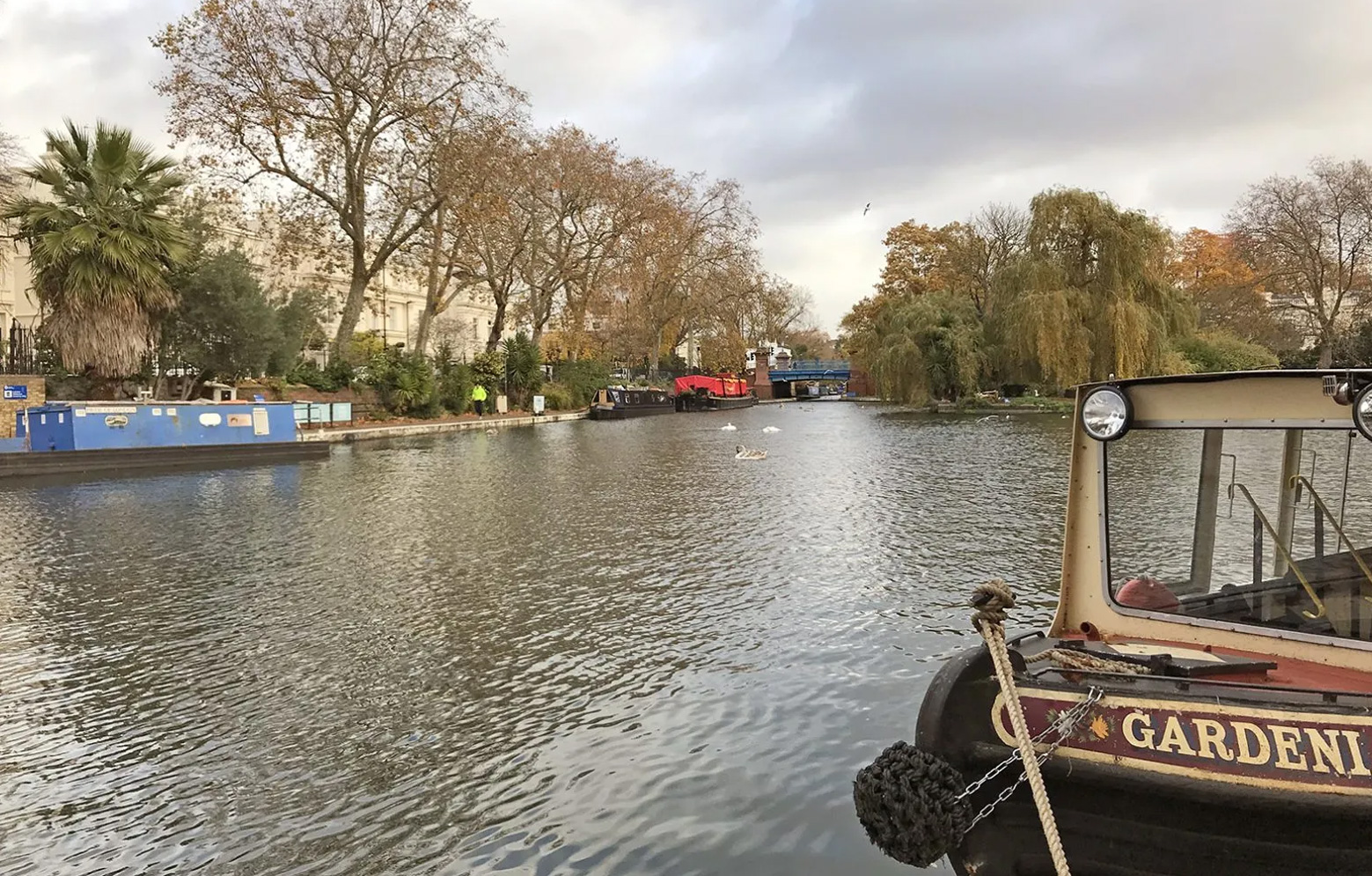A short walk from Morshead Mansions, down past Warwick Avenue tube station and on towards Paddington Basin, is the beautiful and historic area known as Little Venice, where The Regent’s Canal meets The Grand Union Canal and the Paddington Basin tributary. Often described by visitors as one of London’s hidden gems, its history dates back to the early 1800’s.
The area was called London’s Venice for a century before becoming known as Little Venice, the change often attributed to the poet and playwright Robert Browning, who lived nearby in the late 19th century. Browning spent part of his life in Italy and died in Venice. The small bird island in the middle of the triangle between the canals is named after him.

It was more recently thought that it was actually Lord Byron who is responsible for the name, as stated in 1966 in a letter by Lord Kinross. Byron has been featured on the recently added plaques that can be seen on the walls close to the Waterside Café, a popular floating eatery that’s moored close to the Westbourne Terrace Road Bridge.
The exact boundaries of Little Venice aren’t completely clear, however, it’s generally thought to be roughly bounded by Delamere Terrace, Warwick Crescent, Howley Place and Maida Avenue to the south, Maida Vale (Road) to the east, the Lord Hill Road / Formosa Street Bridge to the west and Sutherland Avenue to the north.

Little Venice is at the southern end of Maida Vale, which takes its name from the Italian town of Maida, in Calabria, where in 1806 the British won a battle over Napoleon. A pub called ‘The Maida’, now no longer in existence, was sited on the Edgeware Road and its sign showed a likeness of General Sir John Stuart, who was made Count of Maida by King Ferdinand IV of Naples after the victory at the same battle. More recently, the pub formerly known as The Truscott Arms was renamed The Hero of Maida.
In 1801 Paddington was just a village on the outskirts of London, but the arrival of the canal saw it become an important waterways hub and as a consequence, the area started to flourish. In 1911, architect John Nash produced a masterplan for the Prince Regent to redevelop a large area of central north London. As a result, the Regent’s Canal was included in the scheme, running for part of its distance along the northern edge of Regent’s Park and into Little Venice.

Following this successful development, many of the other houses and mansions in the surrounding area and further along the canal were built in a similar style. These greatly elevated the status of the whole area and set the tone for Little Venice becoming an ‘expensive’ area to buy property, as it is to this day. The character of this neighbourhood is largely defined by the Regency style, with beautiful white stucco buildings on many of the surrounding streets, including Blomfield Road, Warrington Crescent and Randolph Road.
On the eastern side of Paddington Basin is Rembrandt Gardens, which was originally planted in the 1970’s on the 700th anniversary of the founding of Amsterdam, known as the ‘Venice of the North’. Along the canal, as well as The Waterside Café you can find the Canal Café Theatre, The Puppet Theatre Barge, The Summerhouse Restaurant and Café La Ville, which spans the bridge on the eastern end of the canal. The area also hosts the annual Canalway Cavalcade, which you can read more about here.

Close by, the area is blessed with three Grade II Listed pubs with historic facades and interiors, The Prince Alfred on Formosa Street, The Warwick Castle in Warwick Place and The Warrington, on Warrington Crescent. The Colonnade Hotel, also on Warrington Crescent, dates back to 1863 and was originally a pair of houses. The interior still boasts many original features, including mouldings and a continuous 1st floor balustrade, and there are blue plaques on the outside in tribute to historical associations with code-breaker Alan Turing and psychoanalyst Sigmund Freud.
Today, the area around Paddington Basin is a vibrant tourist spot and a lovely place to go for a stroll. Walking further into Paddington Basin provides a complete change from historic to modern, with huge amounts of redevelopment having taken place in recent years. Here too you will find an array of restaurants, bars and cafes and fascinating places to take a break, including Sheldon Square and Merchant Square, which features the Floating Park and the Fan Bridge. From the Basin, you can take boat trips along The Regent’s Canal to London Zoo and Camden Town.






